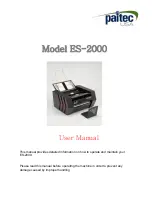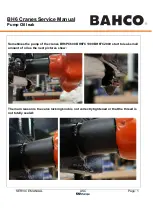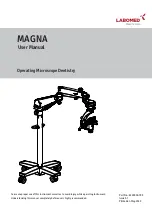
8
Securing
Securing the extension arm to the overhead stirrer
Diagram
(see Fig. 2)
Ensure that the extension is fitted securely.
Vibration may cause the screw to become loose. It
is therefore necessary for safe use to occasionally
check that the extension arm is attached securely.
Tighten the hexangular bolt as if required.
Securing the overhead stirrer to the stand
Diagram
(see Fig. 3)
First secure the cross sleeve (H) to the stand (I).
Then secure the extension arm (J) of the laborato-
ry stirrer in the open side of the cross sleeve which
is facing upwards. Once you have set the position
required for the stirring procedure, firmly tighten
the two clamping bolts (G).
Check that the stirrer is held in position firmly prior to
each use and also at regular intervals. The position of
the stirrer must only be adjusted when the equipment
is stationary and the power supply is disconnected.
Securing the stirring element using the chuck
Diagram
(see Fig. 4)
Slide the stirring element (M) into the chuck (L).
Tighten the chuck firmly using the chuck key (K).
The stirring element must only be changed when
the equipment is stationary and the power supply
is disconnected.
Securing the stirring shaft protector
Diagram
(see Fig. 5)
Use a stirring shaft protector (Q), e.g.
R 301
, to
provide protection against injury when working
with the instrument.
Use the bolts (U) to attach the plastic half-shell
pieces to the stirrer (T), as shown in
Fig. 5
. The
screw (S) can be used to adjust the length of the
stirring shaft protector.
Check that the stirring shaft protector is held in posi-
tion securely prior to each use and also at regular
intervals. The position of the stirring shaft protector
must only be adjusted when the equipment is sta-
tionary and the power supply is disconnected.
Securing the mixing vessel to the stand
Diagram
(see Fig. 6)
First fix the cross sleeve (H) to the stand (I).
Then attach the bracket (Z) of the strap clamp
in the open side of the cross sleeve which is fac-
ing upwards according to the position of stirrer
and the mixing vessel (V), firmly tighten the two
clamping bolts (G).
Clamp the mixing vessel (V) with the flexible clamping
band (W) and secure the flexible band (W) by means
of the clamping lever (X).
Switching on the instrument
Check whether the voltage given on the type plate
corresponds to the available mains voltage.
The socket used must be
earthed (fitted with earth
contact).
If these conditions have been met, the machine is
ready to operate when the mains plug is plugged in.
If these conditions are not met, safe operation is not
guaranteed and the machine could be damaged.
After switch on the main switch (A) as show in
Fig. 1
, the display (C) will display a software ver-
sion number, and then display the speed setting in
last operation after a few second. LED (E) or LED (F)
indicate the speed range setting in last operation.
Ensure the speed set is suitable for the test medium
selected. If in doubt, set the speed adjust knob (B) to
the lowest speed (left hand position). Press the knob
(B) to start or stop the stirring.
By pressing speed range key (D), the unit could be
switch to different modes between high torque
and high speed modes.
•
Speed setting
Before start the unit, you could preselected re-
quired speed with speed adjust knob (B). Then
push down knob (B), the unit will speed up to your
desired speed. When speed is changed, nominal
speed will be displayed on the display (C).
At standstill, speed can be changed between
two speed ranges (
I
or
II
) by pressing key (D).
In standby mode, the display (C) shows the set
speed value.
This stirrer has two different speed ranges:
Range I:
low speed/high torque (LED (E))
Range II:
high speed/lower torque (LED (F))
•
Correct step to change Speed Range:
- Turn off the unit with knob (B)
- Change speed range with key (D)
- Change speed with knob (B)
- Turn on unit with knob (B)
- The speed can be changed at any time during
operation
- Speed appears in display (C).





























